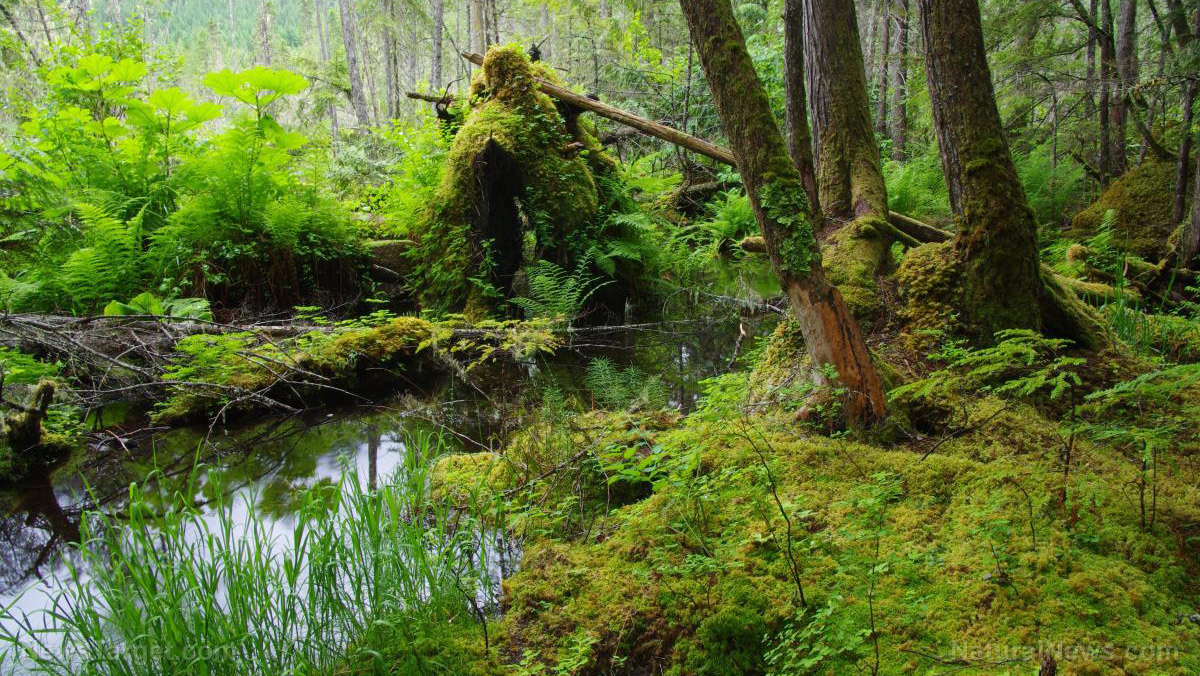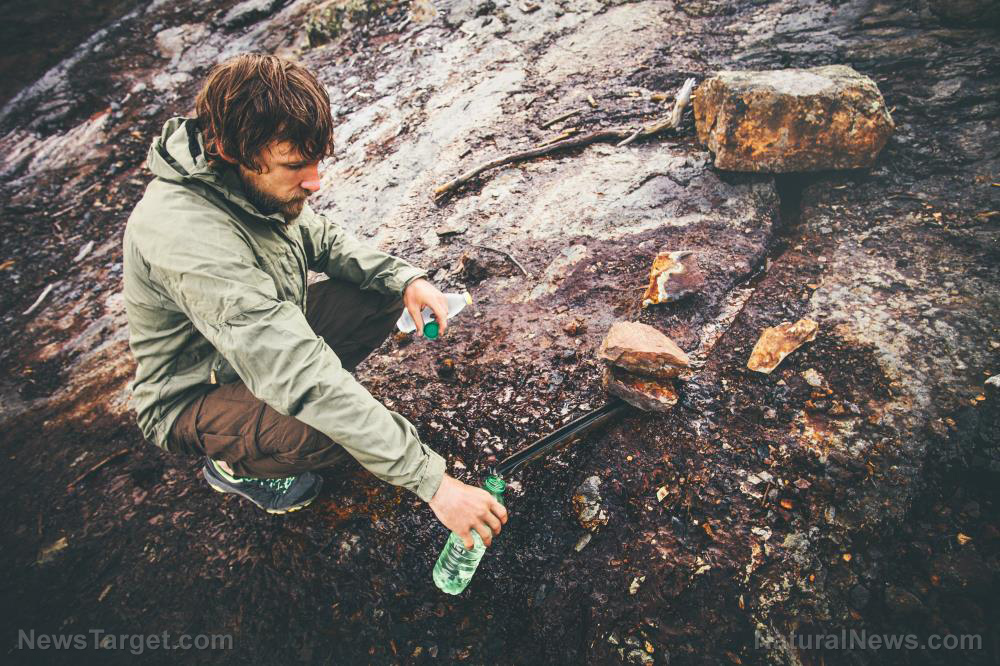Wilderness survival: 8 Ways to find water in the wild
07/02/2020 / By Zoey Sky

Stocking up on water is essential in a long-term survival scenario, like a week-long power outage. Better yet, if you know where to look for water while you’re out in the woods, you can use your gear to purify water so you can stay hydrated and prepare food to keep up your energy.
Detailed below are eight different ways to find water out in the wilderness. Learn them by heart and practice them before SHTF. (h/t to DoomsdayMoose.com)
Head downhill to streams or rivers
Make sure you include a map in your survival gear so you don’t waste time looking for the nearest lake or river. When SHTF and you find yourself lost in the woods, look for natural bodies of water.
If you don’t have a map, use your survival skills and your senses. Listen for the sound of running water to locate the nearest river or stream.
If your senses aren’t enough, walk downhill. Water flows downward to the lowest point, and flowing water is safer to drink than stagnant bodies of water, like lakes or ponds which may contain bacteria.
Dew
Before you gather water from dew, survey the area and make sure the vegetation doesn’t contain poisonous plants. Use an absorbent cloth to gather dew as you walk through vegetation in the early morning. It’s best to do this before sunrise.
If the grass is low, use your ankles: Tie your clothes around your ankles and step near low-lying grass to gather as much dew as you can. When you’re done, get your container then squeeze the cloth on top of it.
Repeat the process until you gather enough water.
Rain
Rain may involve a bit of luck, but if you are lost in the woods during rainy weather, rainwater is one of the safest sources of water that you can drink even without purification.
Note that this is mostly applicable in rural areas where the rain cloud hasn’t traveled through pollution and other contaminants common in the city.
To gather rainwater, make a rainwater trap using a non-absorbent sheet, like tarp or a raincoat, then tie the corner of the material to tree branches. Place a small rock in the middle of the sheet to create an indent that will catch rainwater and make it flow into your container. (Related: Survival basics: How to find food and medicine in the wild.)
Snow
When traveling in locations with a cold climate like the mountains, search for older freshwater ice that looks blueish. Avoid ice that looks grey and opaque, which may be salty.
Don’t eat ice because this will lower your body’s core temperature. Instead, melt the ice before trying to ingest it.
If you don’t have firestarting equipment, place clean ice in a water bottle, then heat it with your body temperature or add it to the remaining water in a container to speed up the melting process.
Follow animals and insects
If you’re in the forest or on desert terrain, animal tracks are great indicators of water. Animal tracks are easy to spot and they often indicate water sources, which they also need to survive in the wild.
If you can’t locate animal tracks, look for insect swarms. Bees indicate flowers, and flowers may indicate a nearby source of water.
Plants
Certain kinds of plants can provide you with water.
- Cacti like the prickly pear can be cut open. You can eat the pulp or smash the pulp then collect the liquid when you’re thirsty.
- Unripe green coconuts are another great source of refreshing juice.
- Tree roots and bamboo are also clean sources of water in the wild. Note that you shouldn’t keep the water from roots for more than 24 hours because it may start to ferment.
Plant transpiration
Transpiration refers to the evaporation of water from plants.
If you’re in an area with vegetation, tie a bag around a leafy tree branch in the morning. Choose a branch with more leaves if you want to gather more water. Double-check that the plant isn’t poisonous.
Place a small rock at the bottom. When the water evaporates from the leaves, it will gather in your bag.
Dig a well
Digging a well is the most work-intensive method in this list, but you may need to dig if you don’t have any other choice.
Find an area with a lot of vegetation, then keep digging until you find the water source.
Note that this may be a hit or miss if you are in a dry region. Instead, find a dried-up river and lake bed. Start digging in a depression or a damp area. Try to dig a large hole that is a meter deep to look for water.
Knowing how to find water in the wilderness is a crucial survival skill, particularly if you spend a lot of time outdoors. If you don’t have a filter or a survival straw in your gear, purify the water you find by boiling, distillation, or use disinfecting tablets.
Sources include:
Tagged Under: bug out, clean water, drinking water, off grid, preparedness, prepper, prepping, remedies, SHTF, survival, survival food, Survival Tips, water, wilderness survival
RECENT NEWS & ARTICLES
COPYRIGHT © 2017 WATER FILTERS NEWS



















